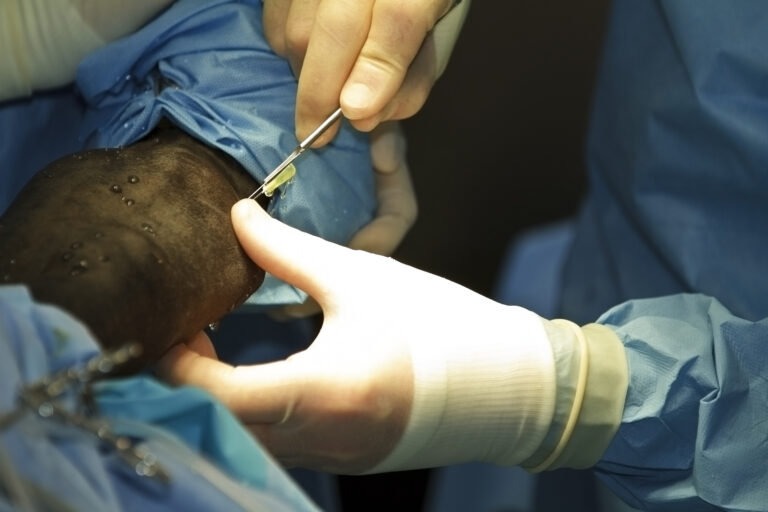
An extended-release injectable omeprazole formulation (ERIO) has become a popular treatment for equine squamous gastric disease (ESGD) and equine glandular gastric disease (EGGD) where it is available. However, published data are limited and optimal treatment regimens have not been determined. The aim of this retrospective clinical study was to compare effects of treatment on ESGD and EGGD when an ERIO formulation is administered at either 5- or 7-day intervals.
Case records and gastroscopy images of horses with ESGD or EGGD treated with ERIO were reviewed. Images were anonymised and graded by one researcher masked to treatment group. Treatment responses were compared between the two treatment schedules using univariable ordered logistic regression.
Forty-three horses were treated with ERIO at 5-day intervals and 39 horses at 7-day intervals. Signalment and presenting signs did not differ between groups. The proportions of horses with EGGD healing (to grade 0 or 1) in association with ERIO used at 5-day intervals (93%) were higher than associated with treatment at 7-day intervals (69%; odds ratio [OR]: 2.41, 95% CI: 1.23–4.74, p = 0.01). For ESGD, there was no significant difference in the proportion of horses healing in association with treatment at 5-day intervals (97%) compared with 7-day intervals (82%; OR: 2.75, 95% CI: 0.91–8.31, p = 0.07). Four of 328 injections were associated with an injection-site reaction (1%).
Bottom line: The use of ERIO at 5-day intervals might be more appropriate than the 7-day interval that is used currently for EGGD.









